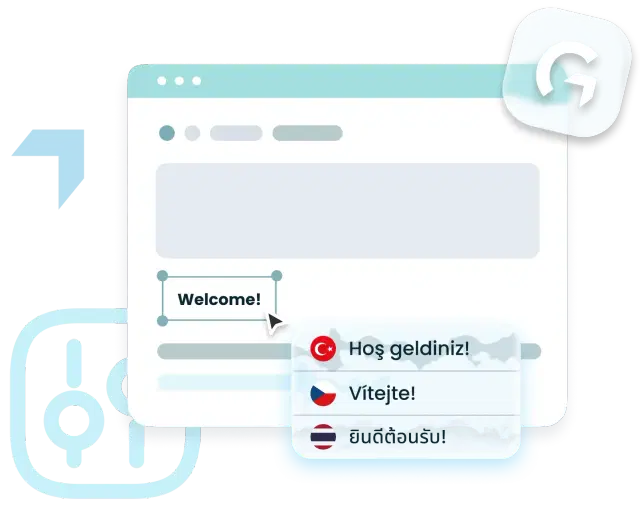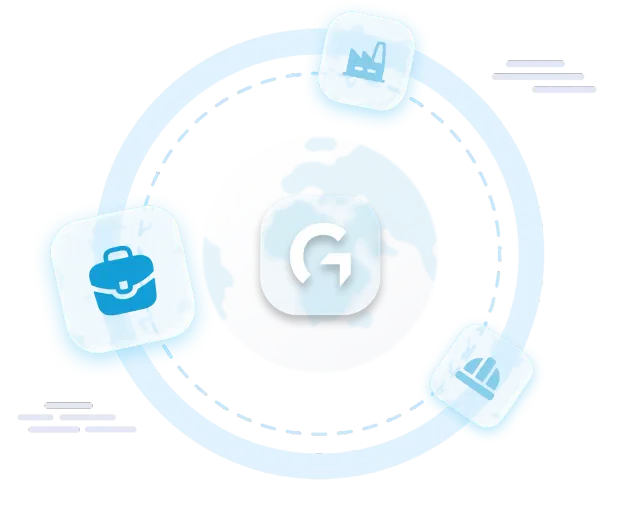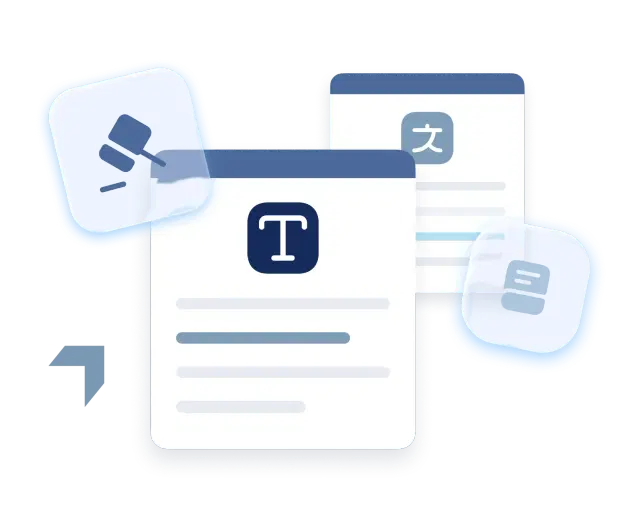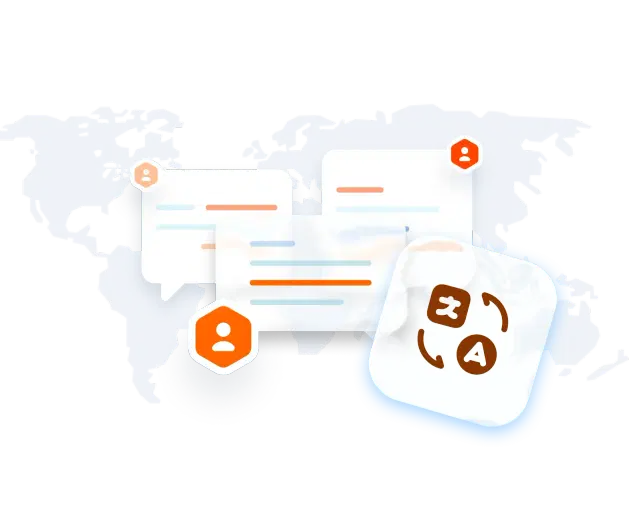Most Popular Languages for Translation and Localization
The Most Popular Languages for Translation: What You Should Know
Updated on September 23, 2025
Thousands of languages are spoken around the world and deciding which ones to prioritize for your website can be a challenge. As more businesses expand internationally, connecting with users in their native language is key to improving user experience and building trust across borders.
Effective communication that is tailored to cultural context is no longer optional. It’s necessary to stay competitive in global markets.
In this blog, we’ll explore the most popular languages for translation and localization, and why choosing the right ones can make a real impact on your business.

Criteria for Selecting Languages
When deciding which languages to prioritize for website translation and localization, a few essential factors should guide your strategy.
Market Size
Start by looking at how many people speak the language, especially in regions you want to reach. Larger language populations increase your potential reach and can drive higher engagement and revenue over time.
Economic Influence
Languages spoken in economically strong regions often come with higher purchasing power. Targeting these markets can open doors to more valuable opportunities and strengthen your brand’s position in high-value sectors.
Growth Potential
Emerging markets deserve attention too. Languages spoken in fast-growing economies may not have the biggest numbers now, but they offer long-term potential for expansion. Early investment in these regions can give your business a head start.
Internet Penetration
A strong digital presence starts with internet access. Focus on languages spoken in regions where a high percentage of the population is online and actively engaging with digital content.
Cultural Fit
Finally, cultural relevance matters just as much as linguistic accuracy. A language may have global reach, but if you don’t adapt content for local customs, preferences, and tone, you may lose your audience. Effective localization takes cultural nuance seriously and helps build trust from the start.
Top 10 Languages for Website Translation and Localization
Choosing the right website language can make or break your global expansion efforts. While your ideal mix depends on your business goals and target regions, these ten languages consistently offer the widest reach and strongest return on investment.
- English
English is the default language of international business, widely used in North America, Europe, and key markets in Asia. It’s also the most common language across the internet. Even if your business is based elsewhere, English often remains a core part of any multilingual strategy. - Chinese (Mandarin)
Mandarin Chinese holds the title of the most spoken language globally, with over a billion native speakers. It is one of the six official languages of the United Nations and a key language for international commerce. As China leads global e-commerce and digital growth, offering a Mandarin version of your site is essential for brands looking to tap into this massive consumer base. - Spanish
Spanish is the primary language for the majority of countries in Latin America and Spain, making it the second most spoken language by native speakers globally. It is also one of the six official languages of the United Nations.
In the United States, the Hispanic population is growing rapidly, leading to Spanish gaining prominence in digital media, marketing, and economic sectors. This trend makes Spanish an invaluable language for businesses looking to tap into this expanding demographic. - Arabic
Spoken across more than 20 countries, Arabic is central to the Middle East and North Africa (MENA) region. Businesses that localize for Arabic can unlock new audiences in some of the world’s most strategically significant markets. - Portuguese
Portuguese is the primary language in Brazil, a digital powerhouse and fast-growing economy. It’s also the official language of Portugal and several African countries, making it a high-potential language for companies targeting emerging markets. - German
Germany is Europe’s largest economy, and German is also spoken in Austria, Switzerland, and parts of Belgium. For industries like engineering, automotive, and finance, German is often a must-have. - Russian
Russian is spoken in Russia and many former Soviet states throughout Eastern Europe and Central Asia. As digital access grows in these regions, so does the value of offering Russian-language content. - French
French has global reach—from Europe to West Africa to parts of Canada. Its influence in diplomacy, education, and culture makes it a powerful addition to any multilingual website strategy. - Japanese
Japan ranks among the world’s largest economies and is known for its tech-savvy consumers. A Japanese-language site can build credibility and trust in a market that values precision and localized detail. - Hindi
India’s rapid digital growth and massive population make Hindi an increasingly strategic choice. As internet access spreads across the country, so does the demand for localized content in regional languages—Hindi chief among them.
Tips for Localization
Translating your website is a strong first step. But to reach users in a way that builds trust and drives action, you need full localization.
Adapt Beyond Words
Localization isn’t just translation. It’s adapting tone, layout, imagery, colors, and messaging to reflect the cultural preferences of the region. What resonates in one country may fall flat—or even offend—in another. Take time to understand local customs before launching.
Adjust Technical Details
Localization also includes formatting for things like currency, date, and time. Make sure your website supports local units of measure, numerical formats, and even text direction, especially for right-to-left languages like Arabic. These details shape the user experience and impact trust.
Adjust Technical Details
Localization also includes formatting for things like currency, date, and time. Make sure your website supports local units of measure, numerical formats, and even text direction, especially for right-to-left languages like Arabic. These details shape the user experience and impact trust.
Stay Legally Compliant
Countries often have unique rules around advertising, data privacy, and content. If you’re entering the European market, for example, you’ll need to comply with GDPR. Localization partners who understand these regulations can help you avoid legal issues and maintain credibility.
Prioritize Quality Assurance
Before publishing localized content, ensure it has been reviewed by native speakers. A strong QA process checks for accuracy, clarity, and cultural appropriateness—both in language and design. Regular testing can also reveal formatting or technical issues that might not be obvious until live.
What are the Benefits of Website Localization?
Not only is localization important during the translation process for your website, but it’s worth the effort and comes with many benefits.
Expanded Reach and Engagement
A localized website meets users where they are—linguistically and culturally. When visitors see content in their own language that reflects their values and preferences, they’re more likely to stay, explore, and engage.
Higher Conversion Rates
Clarity drives action. A well-localized site removes confusion, builds trust, and makes it easier for users to make decisions. When product descriptions, checkout flows, and calls to action all align with local expectations, conversion rates improve.
Improved SEO Across Markets
Localized content performs better in local search results. Optimizing your site for multilingual SEO increases visibility, drives targeted traffic, and helps you compete against local businesses. This means more qualified leads and better performance in every market you serve.
Conclusion
Expanding your website into new languages and regions can seem daunting, but it doesn’t have to happen all at once. Start with the markets that align with your growth strategy and invest in thoughtful localization.
Keep your goals clear. Choose languages based on market size, economic opportunity, and long-term potential. Then localize in a way that respects and reflects each audience’s expectations.
With the right strategy, localization helps you build trust, deepen engagement, and drive global growth that lasts.
Need help with your website localization strategy?
From top-tier translation technology to expert services, GlobalLink empowers brands to expand into new markets with confidence.
Explore Our Solutions
About
We created GlobalLink because we believe that all businesses great and small should have a beautifully translated and localized website.





